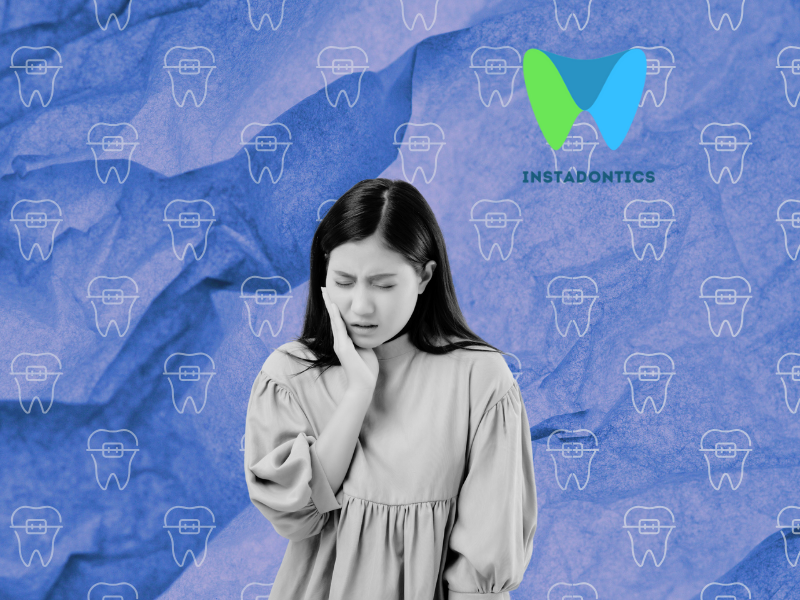Getting your braces off is an exciting milestone. After months or even years of orthodontic treatment, you finally get to see your new, straight smile. However, many people are surprised to find that their teeth aren’t as white or even-colored as they expected once the brackets and wires are removed. Teeth discoloration after braces is a common concern, but understanding why it happens and how to address it can help you achieve the bright, healthy smile you’ve been waiting for.
In this comprehensive guide, we’ll explore the causes of teeth discoloration after braces, discuss prevention strategies, and outline the best treatment options for restoring your smile.
Why Does Teeth Discoloration Happen After Braces?
1. Plaque Accumulation
Braces create many nooks and crannies on your teeth, making it more difficult to maintain proper oral hygiene. Food particles, bacteria, and plaque can easily accumulate around brackets and wires. Over time, this build-up can lead to the formation of stains and even cavities.
2. Demineralization and White Spots
One of the most common types of discoloration after braces is the appearance of white spots. These are areas where the enamel has lost minerals due to prolonged exposure to plaque acids. Demineralization often occurs when oral hygiene is less than optimal during orthodontic treatment.
3. Staining from Foods and Drinks
Certain foods and beverages are notorious for staining teeth, especially when you’re wearing braces. Coffee, tea, red wine, tomato sauce, curry, and dark-colored sodas can all contribute to discoloration. The brackets can shield small areas of the tooth, resulting in uneven staining when the braces are removed.
4. Adhesive Residue
Sometimes, the adhesive used to attach brackets to the teeth can leave behind a residue. This residue can attract stains or even appear as a discolored spot itself if not properly removed after debonding.
5. Natural Tooth Color Variation
Everyone’s teeth have natural color variations. When the braces are removed, you may notice differences in color that were previously hidden by the brackets. This can make existing discoloration more noticeable.
Stained Teeth After Braces | Types of Discoloration
Understanding the type of discoloration you’re dealing with can help you find the best solution.
1. White Spots
White spots are a form of early tooth decay caused by demineralization. They often appear as chalky, opaque areas around where the brackets were attached.
2. Yellow or Brown Stains
These stains are usually due to plaque build-up, poor oral hygiene, or the consumption of staining foods and beverages. They can appear as patches or lines on the teeth.
3. General Dullness
Some people notice that their teeth look dull or less shiny after braces. This can be due to minor enamel wear or surface staining.
Can You Whiten Teeth While You Still Have Braces?
It’s generally not recommended. Whitening during braces (with traditional metal brackets) can lead to uneven results because the whitening agent cannot reach the tooth surfaces covered by the brackets. If you whiten while wearing braces, the exposed parts of your teeth may lighten—but once your braces are removed, you could be left with noticeable darker spots where the brackets were.
✅ Exceptions:
Prevention: How to Avoid Teeth Discoloration During Orthodontic Treatment
The best way to deal with discoloration is to prevent it from happening in the first place. Here are some practical tips:
1. Maintain Excellent Oral Hygiene
- Brush Thoroughly: Use a soft-bristled toothbrush and fluoride toothpaste. Brush at least twice a day, and ideally after every meal.
- Floss Daily: Use floss threaders or orthodontic floss to clean between teeth and under wires.
- Use Interdental Brushes: These small brushes can help clean around brackets and under wires where regular brushes can’t reach.
- Mouthwash: An antimicrobial or fluoride mouthwash can help reduce bacteria and strengthen enamel.
2. Watch Your Diet
- Limit Sugary Foods and Drinks: Sugar feeds the bacteria that cause plaque and demineralization.
- Avoid Staining Foods: Cut back on coffee, tea, red wine, and dark-colored sodas.
- Eat Crunchy Fruits and Vegetables: Foods like apples and carrots can help clean your teeth naturally.
3. Regular Dental Visits
- Professional Cleanings: See your dentist and dental hygienist regularly for professional cleanings and check-ups.
- Fluoride Treatments: Your dentist may recommend fluoride varnishes or gels to strengthen enamel.
4. Use Orthodontic Wax and Products as Directed
- Follow Instructions: Use orthodontic wax and other products as recommended to avoid irritation and plaque build-up.
What to Expect When Braces Are Removed
When your orthodontist removes your braces, they will also clean off any remaining adhesive. However, you may see:
- White spots where brackets were attached
- Yellow or brown stains in areas that were hard to clean
- Slightly uneven color between areas under the brackets and the rest of the tooth
Don’t panic—many cases of post-braces discoloration are treatable!
Treatment Options for Stained Teeth After Braces
Depending on the type and severity of discoloration, different treatments may be appropriate. Here’s a breakdown:
A Professional Dental Cleaning
A thorough cleaning by a dental hygienist can remove surface stains and plaque that have built up during orthodontic treatment. Sometimes, this is all that’s needed to restore your smile.
B Teeth Whitening
2. In-Office Whitening (Best for Fast, Even Results)
How it works:
Your dentist applies a highly concentrated bleaching gel to your teeth and uses special lights or lasers to activate it. One session can dramatically lift stubborn stains and even out discoloration.
Why it’s ideal after braces:
- Strong enough to treat deep or uneven stains.
- Immediate results in just one visit.
- Supervised by a professional, so it’s safe and precise.
Good for: Severe stains, uneven patches, white spots that need blending.
2. At-Home Whitening Kits (Best for Gradual, Customized Results)
How it works:
Your dentist gives you custom-made trays and professional-strength whitening gel to use at home over 2–4 weeks.
Why it’s effective after braces:
- Custom trays ensure even coverage, preventing patchy whitening.
- Slower whitening minimizes tooth sensitivity, which can be common after braces.
- You control the pace based on your comfort.
Good for: Moderate stains, patients who prefer gradual change, people with sensitive teeth.
3. Over-the-Counter Products (Best for Mild Stains)
If the stains after your braces are minor, you might get decent results with over-the-counter products:
Top Over-the-Counter Whitening Products for After Braces:
- Crest 3D Whitestrips Professional Effects:
Trusted, effective, and relatively gentle. Great for surface stains. - Colgate Optic White Pro Series Toothpaste:
Contains hydrogen peroxide and can help with minor yellowing. - AuraGlow Teeth Whitening Pen:
Easy to apply for touch-ups and on-the-go use.
Things to know:
- OTC products are less powerful than professional treatments.
- They may not fully fix deeper or uneven discoloration caused by braces.
- Best for maintenance or as a starter if you’re not ready for professional whitening.
Custom trays and professional-grade whitening gels prescribed by your dentist can provide noticeable results over a few weeks.
C Microabrasion
For superficial white spots or enamel defects, your dentist may recommend microabrasion. This procedure gently removes a thin layer of enamel to reduce the appearance of white spots.
D Remineralization Treatments
If you have white spots from demineralization, remineralization therapies can help restore lost minerals to the enamel. These may include:
- Fluoride varnishes
- Calcium phosphate pastes
- Prescription-strength fluoride toothpaste
These treatments can help fade white spots over time and strengthen your enamel.
E Dental Bonding or Veneers
For severe or persistent discoloration that doesn’t respond to other treatments, cosmetic procedures like dental bonding or porcelain veneers may be an option. These can cover discoloration and restore a uniform appearance.
Home Remedies and Tips
While professional treatments are often most effective, there are steps you can take at home to improve the appearance of your teeth after braces:
- Brush with a whitening toothpaste: These can help remove surface stains.
- Try oil pulling: Swishing coconut oil in your mouth may help reduce bacteria and minor stains.
- Use a straw: When drinking staining beverages, use a straw to minimize contact with your teeth.
Important Tips for Whitening After Braces
- Wait a few weeks after braces removal:
Your teeth may be sensitive immediately after getting your braces off. Waiting 2–4 weeks allows your enamel to settle and reduces the risk of irritation. - Fix white spots first if needed:
Whitening doesn’t “remove” white spots—it can make them more noticeable! Some dentists recommend treatments like fluoride or remineralization therapies before whitening. - Use sensitivity toothpaste:
If you’re whitening, consider using a toothpaste designed for sensitive teeth to minimize discomfort. - Follow instructions carefully:
Overusing whitening products can damage your enamel and cause long-term sensitivity. - Hydrate your enamel:
Drink plenty of water and avoid acidic drinks like soda, which can weaken enamel and make staining worse after whitening.
FAQs About Whitening Teeth After Braces
Is it safe to whiten teeth after braces?
✅ Yes, but it’s important to wait about 2 to 4 weeks after your braces are removed.
Your teeth may be slightly sensitive and your enamel can be temporarily weaker right after debonding. Waiting allows your teeth to stabilize, ensuring better whitening results and minimizing sensitivity.
Tip: Always check with your dentist first. They can examine any enamel damage, spots, or staining before recommending the safest whitening method for you.
Can I use whitening toothpaste during braces?
✅ Yes, whitening toothpaste is generally safe during braces.
It can help reduce minor surface stains caused by foods like coffee, tea, or tomato sauce.
However, whitening toothpaste doesn’t bleach your teeth—it just polishes away surface stains.
Important: Be gentle when brushing. Aggressive scrubbing around brackets can lead to gum recession or enamel damage.
How long does it take to see results after braces whitening?
- In-office treatments:
Results are often immediate after one or two sessions. You’ll notice your teeth are significantly brighter right away. - Dentist-supervised at-home kits:
Expect visible improvements within 2–4 weeks. These kits use professional-strength gels but work more slowly to minimize sensitivity. - Over-the-counter (OTC) products:
Whitening strips, pens, or toothpastes usually take about 4–8 weeks of consistent use to show noticeable changes—and they may not fully address deeper stains.
What if whitening doesn’t fix all the stains?
Sometimes, whitening alone isn’t enough, especially if you’re dealing with:
- Deep white spots (decalcification areas where minerals were lost under braces)
- Severe brown/yellow staining
- Uneven color patches
In these cases, your dentist might recommend:
- Microabrasion: A procedure that gently removes a thin layer of enamel to eliminate spots and stains.
- ICON Resin Infiltration: A minimally invasive treatment that blends white spots with the surrounding tooth color, making them less visible.
- Dental bonding or veneers: For more severe cases where staining or enamel damage is significant, cosmetic restorations can provide a completely even, natural-looking smile.
👉 Pro Tip: Always treat white spots first before full whitening. Otherwise, whitening can make white spots look even whiter and more obvious!
Stains after braces are common—but they don’t have to be permanent. With the right whitening method, you can achieve the even, bright smile you were hoping for when you started your orthodontic journey. Whether you choose professional treatments or trusted at-home options, make sure you’re gentle with your teeth and patient with the process.
A beautiful, confident smile is just a few steps away!
Read more on: Best Tooth Whitening Toothpaste



